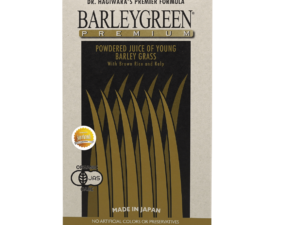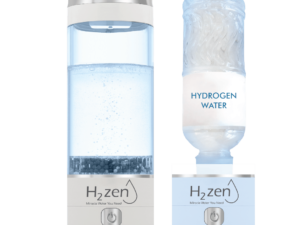Did you know your body is home to millions of tiny microbes? These bacteria live in your gut, skin, and mouth, playing a big role in your overall health. Some help your immune system, while others can cause harm.
Medicines like antibiotics fight infections by killing harmful bacteria. But they can also wipe out beneficial bacteria, leading to imbalances. On the other hand, probiotics add live, helpful microbes to your system.
Understanding how these two work is key to maintaining gut health. While one destroys, the other replenishes. Yogurt, fermented foods, and supplements often contain strains like Lactobacillus or Bifidobacterium.
For personalized advice on balancing your microbiome, contact Wellness Group on WhatsApp at +60123822655. Learn more about probiotic health benefits.
Key Takeaways
- The human body hosts millions of microbes affecting overall wellness.
- Antibiotics eliminate both harmful and helpful bacteria.
- Probiotics introduce live microorganisms to support digestion.
- Fermented foods and supplements are common probiotic sources.
- Balancing both is crucial for optimal gut function.
Understanding the Probiotic and Antibiotic Difference

Click to LEARN MORE
Gut health hinges on balancing two powerful forces. One fights invaders, while the other rebuilds defenses. Their names—derived from Greek—reveal their roles: antibiotics (“against life”) and probiotics (“for life”).

Ancient Greeks used moldy bread to treat infections. Centuries later, penicillin changed medicine forever. Today, these drugs target bacterial infections, but they don’t discriminate. Harmful and helpful microorganisms alike are wiped out.
Not all antibiotics work the same. Broad-spectrum types attack many species, while narrow-spectrum focus on specific threats. Both disrupt gut flora, sometimes causing bloating or diarrhea.
Probiotics step in to restore balance. Specific strains, like Lactobacillus casei GG, block harmful bacteria from sticking to the gut lining. Research shows they also boost the immune response.
Choosing the right probiotic matters. Different strains address unique issues, from digestion to allergies. Meanwhile, overuse of antibiotics fuels resistance—a global health crisis tied to microbial imbalance.
“Probiotics regulate microbiota composition and immune reactivity,” notes a joint FAO/WHO report.
Understanding these differences helps protect long-term wellness. For personalized advice, contact Wellness Group via WhatsApp at +60123822655.
How Probiotics and Antibiotics Affect Your Gut Health
Your digestive system is a complex ecosystem where tiny organisms shape your well-being. When this balance tips, health issues like inflammation or yeast overgrowth can arise. Two key players—antibiotics and probiotics—have opposite effects on this delicate environment.

Antibiotics: Disrupting the Microbial Balance
Broad-spectrum antibiotics wipe out entire species of bacteria, including beneficial ones. This often leads to diarrhoea and weakens immune responses. Overuse may even contribute to long-term issues like obesity or allergies.
Researchers at the Weizmann Institute found that prolonged use alters the microbiome significantly. Harmful pathogens can thrive in the absence of protective bacteria, creating a cycle of resistance.
Probiotics: Restoring and Supporting Gut Health
Probiotics combat these issues by releasing compounds like bacteriocins. These naturally block harmful invaders and may alleviate conditions such as ulcerative colitis. Some strains even show promise for mental health support.
However, quality varies among commercial products. Immunocompromised individuals should consult doctors before use. For mild issues like diarrhoea, targeted probiotics for upset stomach can help restore balance.
“Probiotics may reduce antibiotic-associated diarrhoea by 42%, yet timing matters—delayed recovery is possible,” notes a 2023 Gut journal meta-analysis.
Can You Take Probiotics and Antibiotics Together?
Many people wonder if combining these two supplements is safe or effective. The answer lies in timing and strains. Research shows a strategic approach minimizes risks while maximizing benefits.
When you use antibiotics, they attack all bacteria—even the helpful ones. Taking probiotic supplements simultaneously may reduce their efficacy. Experts recommend a 2-hour gap to protect the live cultures.
Certain strains work better alongside antibiotics. Lactobacillus and Bifidobacterium are most compatible. A meta-analysis by D’Souza found they cut antibiotic-associated diarrhoea risk by 39%.
“Staggered intake preserves probiotic viability and supports gut recovery,” advises a 2023 Clinical Nutrition study.

Click to LEARN MORE
Key tips for optimal results:
- Consult a doctor: Strain-specific guidance ensures safety, especially for immunocompromised individuals.
- Time it right: Take probiotics with lunch to improve adherence and avoid morning antibiotic doses.
- COVID-19 note: Probiotics may prevent secondary bacterial infections during recovery.
Remember, probiotics don’t replace antibiotics but counterbalance their effect on gut flora. Overuse of antibiotics fuels antibiotic resistance, making this balance critical.
For personalized advice, contact Wellness Group Malaysia via WhatsApp at +60123822655.
What Science Says About Probiotics and Antibiotics
Research offers fascinating insights into how these two interact with our bodies. A 2012 review by Rand Corp analyzed 82 studies, showing certain strains reduce diarrhoea risk. However, results varied widely across trials.
Scientists at the Weizmann Institute discovered fecal transplants restore gut flora faster than supplements. This highlights the complexity of microbial ecosystems. Not all foods or pills deliver equal benefits.
“Personalized probiotics tailored to individual immune profiles may revolutionize treatment,” suggests a 2023 Nature journal report.
Current research faces challenges:
- Strain variability: Effects differ between Lactobacillus and Bifidobacterium species
- Sample sizes: Many trials involve fewer than 100 participants
- Quality control: Canadian audits found 30% of products mislabel CFU counts
A 2019 US trial revealed probiotics didn’t help paediatric gastroenteritis cases. Yet, 23 studies show they cut antibiotic-related diarrhoea by 50% in healthy adults. The immune system plays a key role in these outcomes.
Future directions include DNA-based probiotic matching and combating antibiotic resistance. While promising, current evidence confirms they’re helpful—but not magic bullets.
Conclusion
Fermented foods like yogurt and kimchi offer natural ways to boost digestive wellness. They provide health benefits by replenishing good bacteria. For those using antibiotics, balance is key to minimizing their effect on the system.
Always consult a professional before self-prescribing. Severe conditions need expert support, not guesswork. Wellness Group Malaysia offers personalized guidance via WhatsApp at +60123822655 (Mon-Fri 9:30am-6:30pm).
Discover more about daily probiotic use for optimal gut health.
FAQ
What’s the main difference between these two types of bacteria-related treatments?
One fights harmful microbes, while the other replenishes beneficial ones. The first targets infections, and the second supports gut health.
How do these treatments impact digestive health differently?
While one can disrupt gut flora balance, the other helps restore it by introducing helpful microorganisms like Lactobacillus or Bifidobacterium.
Is it safe to use both at the same time?
Research suggests spacing them apart by a few hours can maximize benefits. Always consult a doctor for personalized advice.
Do they influence the immune system in the same way?
No. One weakens pathogens, while the other strengthens the body’s natural defenses by promoting healthy bacterial growth.
Are there specific foods that naturally provide the same benefits as supplements?
Yes! Yogurt, kefir, and fermented foods like kimchi contain live cultures that support gut health naturally.
Can overuse of one lead to resistance issues?
Excessive use of antimicrobials may contribute to resistance, whereas beneficial microbes don’t pose this risk.
What does current research say about combining them?
Studies indicate that pairing them may reduce side effects like diarrhoea, but timing and strain selection matter.






